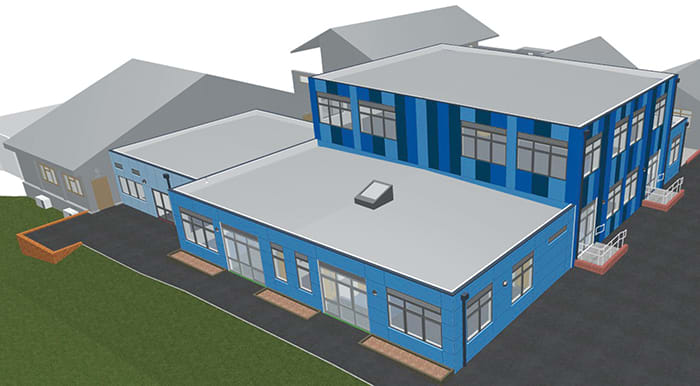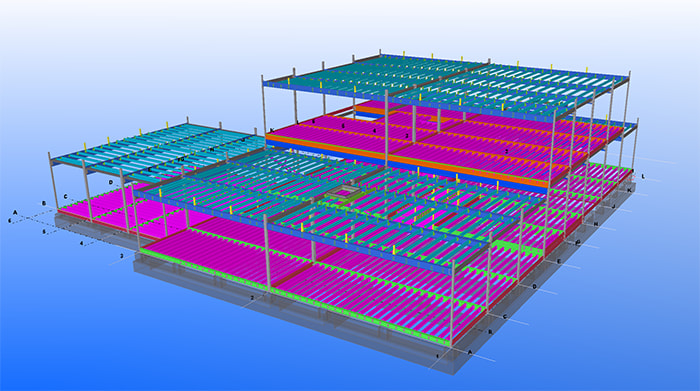- Client: Surrey County Council
- Lead Contractor: McAvoy Group
Modular specialist McAvoy, working as principal contractor on a Surrey special needs school extension, integrated BIM with its offsite manufacturing methods to help deliver a rapid site programme.
Integrating BIM with offsite manufacturing is seen an important step on construction’s digital journey – and a school extension project in Surrey demonstrates the potential benefits.
Modular specialist McAvoy, the principal contractor on the project, used BIM to address the complexities of an awkward sloping site, with gradient differences of 870mm.
The 910 sq m extension at West Hill School in Leatherhead, which caters for children with learning and additional needs, links the traditionally constructed main school building with an existing modular teaching block, and provides new classrooms, breakout rooms, a library and a first floor teacher training centre.
It allows the school to change from secondary education provision to become a two-form entry primary school.

The extension (the blue elements) connects to an existing modular classroom and the traditionally constructed school in the background
The £2.9m project had to be delivered on the constrained, sloping site while the school remained fully operational.
“Our offsite solution was engineered to accommodate significant height differences between the main building and the modular block,” explains David Clark, head of manufacturing and innovation at McAvoy Group, who heads up its BIM strategy and implementation.
“3D modelling was invaluable to inform the groundworks. Challenging ground conditions required complex piled foundations and a supporting steel frame,” he says. “Gradient differences were incorporated within corridors using a double-floor beam design and three ramped areas, which ensured the gradients were compliant with part M of the Building Regulations. This avoided the need for steps inside the building.”
Some 28 steel-framed modules were used, and 3D modelling aided installation, with workers referencing the models from tablets on site, Clark explains.

BIM visualisation showing the extension
“The BIM models provided the whole supply chain with a better understanding of the building design and enabled them to better plan their elements of the build process,” he adds. “Clash detection between the structural and M&E elements was also invaluable.”
3D models and virtual reality also helped decision-making with stakeholders. “The school was able to see each room and experience the space,” he explains. “BIM gave teaching staff the opportunity to assess how the training centre could work located as a second storey over the new classroom block rather than as a freestanding building as originally envisaged.”
Though manufactured offsite, the extension accommodates bespoke design features to reflect the children’s needs. These include wider corridors to help children with mobility issues, hygiene rooms with a hoist to assist children in wheelchairs, and special acoustics due to the school’s location under a flight path.
The digital techniques allowed streamlined co-ordination of workflows, which led to time savings against the overall programme, Clark says.
“The 28 modules were installed in just four days and we restricted working times to maintain access and accommodate the children’s arrival at and departure from school,” he adds.
The work programme was completed after less than eight months on site.
Giorgia diSarno, project manager at client Surrey County Council, says: “Offsite manufacturing allowed us to develop a bespoke building with the benefits of better quality control in a factory environment. It was essential to reduce time on site to avoid disruption to the school. A shorter construction period on site is hugely beneficial to any school but particularly to special needs children.”












